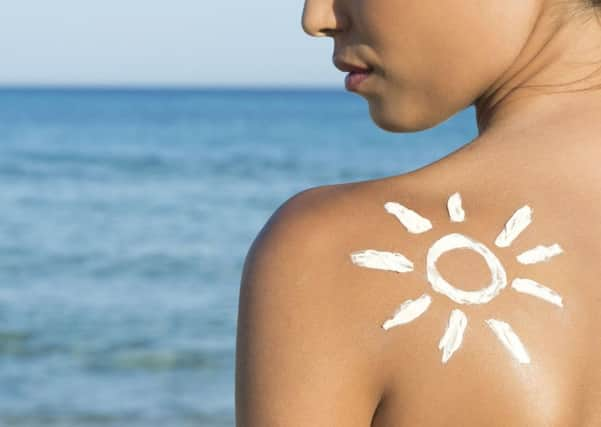Dr Terrina Dickson: Sunscreen and sense needed to stay skin-safe rather than sun-sorry


There are three types of skin cancer to be aware of: malignant melanoma, squamous cell carcinoma and basal cell carcinoma. On average, someone who dies from skin cancer typically loses 20 years of their life and the rates of malignant melanoma are rising faster than any other type of common cancer.
A recent survey by the British Association of Dermatologists has shown that more than one in three people – 35 per cent – have been sunburnt in the last year while in the UK, and of those 28 per cent were sunburnt three or more times. Factor in overseas holidays and almost half of those surveyed, 46 per cent, who’d been abroad in the last 12 months got sunburnt.
Advertisement
Hide AdAdvertisement
Hide AdWorryingly, eight out of ten people are failing to apply sunscreen before going out in the sun.
UK exposure is the main preventable cause of skin cancer, so it’s important to be aware of any skin changes, and regularly check moles, both old and new. If someone has a history of sunburn as a child or through sunbed use or those with fair skin who burn easily, it’s especially important to have any moles inspected thoroughly by a specialist in skin cancer and mole screening.
The majority of people have a few moles and in most cases there is no need to be concerned, but there are a few things to look out for: an increase in size; a change in shape or colour or the mole becoming irregular.
Although sun provides the body with much-needed vitamin D, it’s imperative to avoid burning by applying sunscreen regularly, ideally every two hours, using a minimum of SPF15. Cover up, wear sunglasses that block UV radiation and most importantly avoid the sun between 11am-3pm.
Of course, for most of us it is impossible to know precisely what is happening to moles in awkward places – on our back, for example. That’s when full screenings can be particularly helpful – a body assessment using a hand-held dermatoscope (a device that takes detailed photographs of moles and other skin lesions) is undertaken with a particular focus on identifying moles displaying abnormalities or those appearing different from the rest.
Any unusual moles and a selection of the remaining moles will be photographed with the images securely stored to allow for comparison if required at a future date. Once the assessment has been performed, it’s important to continue to monitor any moles, particularly in the chest or back area for size, colour, shape or density and for any signs of bleeding.
If changes are detected, don’t delay with a GP appointment, it’s better to be skin-safe than sun-sorry. With summer fast approaching, it’s essential that people take the right precautions to stay sun-safe.
Dr Terrina Dickson is a private GP minor surgery and skin specialist at The Edinburgh Clinic and NHS